TRI PROTEOMICS FACILITY
Proteomics is a technique that aims to study all protein components in a system. The TRI Proteomics Facility can facilitate identification and quantitation of thousands of proteins in a single analysis. At the basic level, Proteomics can identify changes in proteins present with different treatment conditions. More advanced techniques can assist with characterising alterations of protein structure (modifications) and protein-protein interaction networks to help understand the mechanisms of protein action.
![]()
How can researchers use PROTEOMICS?
The following diagrams explain the various ways researchers can use Proteomics services at TRI.
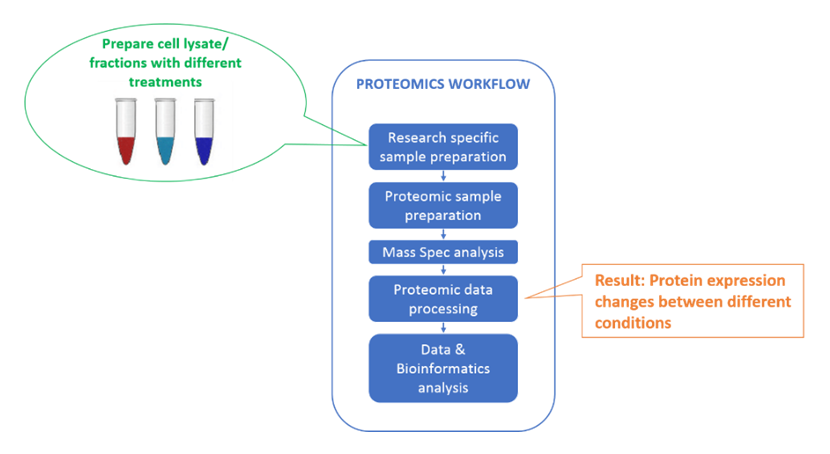
Identifying proteins and expression changes between different treatment conditions
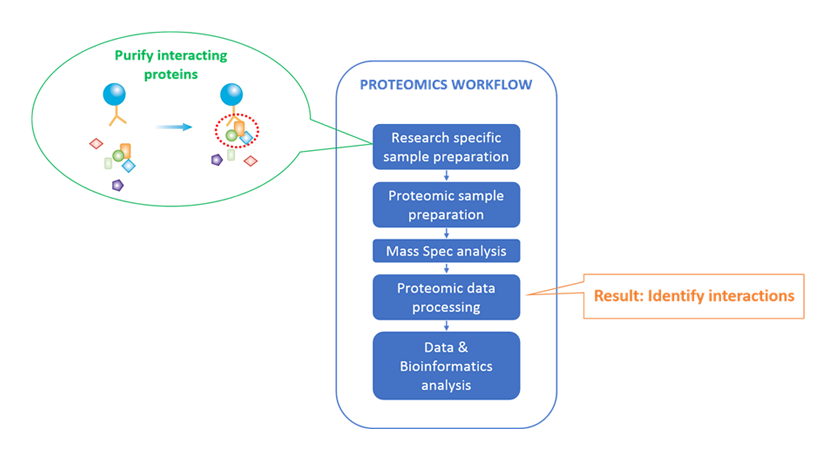
Identifying protein interactions
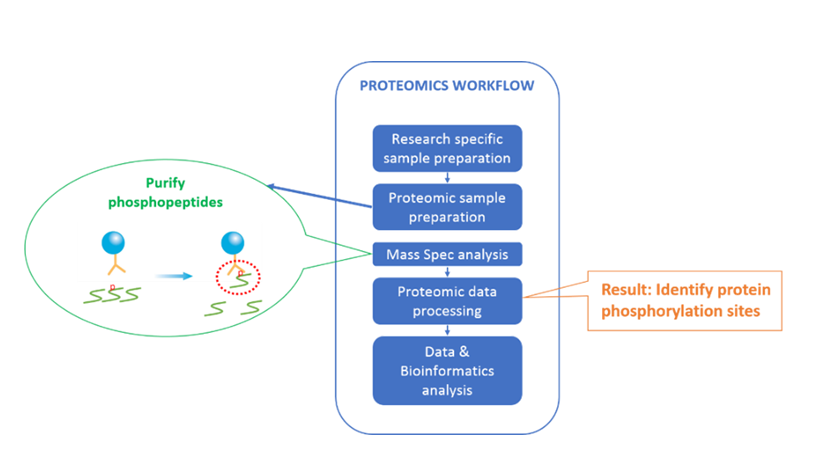
Characterizing protein modifications
PROTEOMICS facility services
The TRI Proteomics Facility provides a comphrehensive Proteomics sample analysis service. Facility staff can assist with all stages of the Proteomics workflow; from extracting proteins from whole cells and proteomics sample preparation, to sample analysis and comprehensive documentation of all work undertaken.
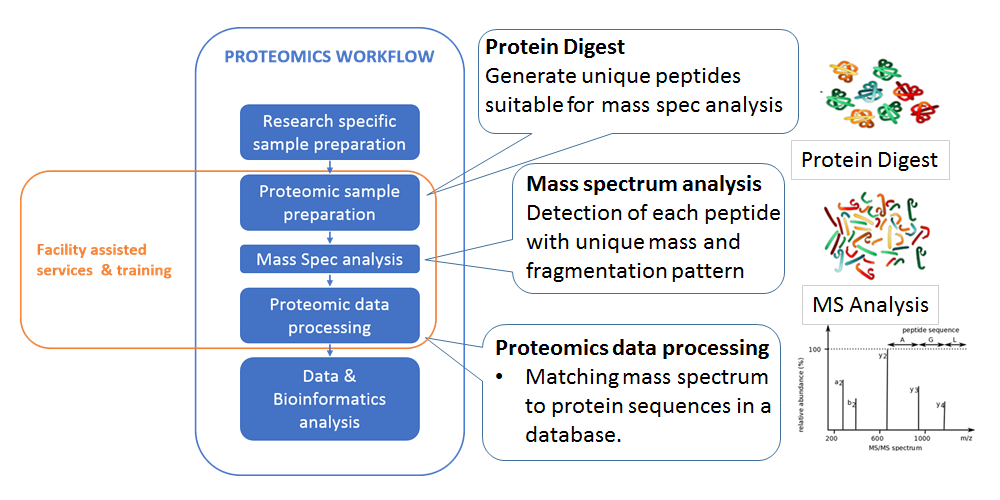
A. Facility Assistance: Facility provides specialist services and training for proteomics sample analysis which include sample preparation, mass spec analysis and proteomics data processing.
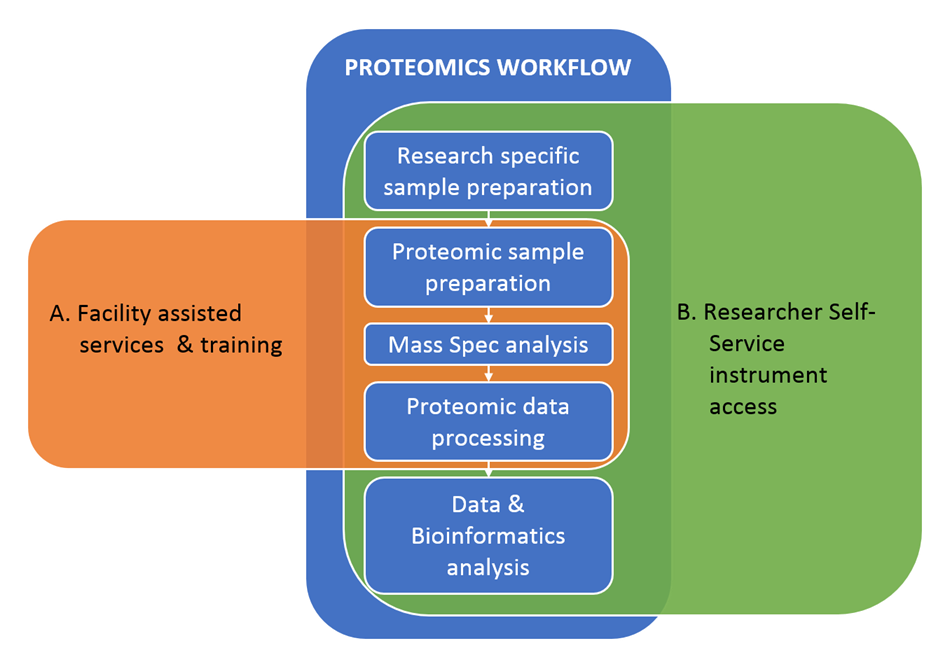
B. Instrument Access: Researchers are welcome to use facility instruments for sample preparation, mass spec analysis and proteomics data processing
WHAT IS PROTEOMICS?
The study of proteins in a system
Modern proteomics techniques use Mass spectrometry for protein identification and quantitation. Proteomics can be used for protein characterization through sequence and post-translational modification analysis.
Protein identification
Proteomics experiments can identify 1 to 1000s of protein in a single experiment. Each protein will have species, protein name and accession number information. Protein identification is dependent on the protein already being present in a database. Further, low protein abundance need optimization.
Protein quantitation
Proteomics can provide quantitative information through mass spectrum numbers and intensities, number of unique peptides and protein coverage % information. Proteomic search engines will also provide protein ID confidence and false discovery rate info.
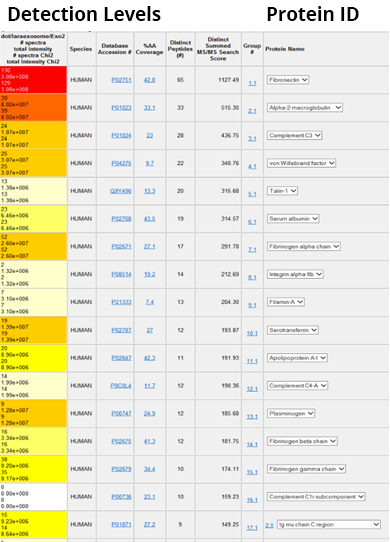
proteomics training
The Proteomics Facility provides regular theoretical and practical training. The training schedule is available here. The practical training includes hands on training on core instrucments for whole cell proteomics or co-immunoprecipitation assay to study protein-protein interactions as well as mass spectrometry sample analysis, and data analysis.
pricing information
Current pricing for Proteomics services and equipment can be found on PPMS.![]()
contact the tri PROTEOMICs facility
The TRI Proteomics Facility is one of only a few facilities within Australia where interested users can gain training in the operation of Robotic liquid handlers and high-end Mass Spectrometers. To discuss how the facility can benefit your research or for technical advice please contact the TRI Proteomics Core Facility Staff.
Translational Research Institute
Level 5E 37 Kent Street, Woolloongabba QLD 4102
T: +61 7 3443 7066, E: [email protected]
![]()
user requirements
Researchers can organize instrument induction, training and booking through proteomics facility PPMS.
PROTEOMICS facility instruments
The facility has the following instrumentation and capabilities:
Sample Preparation |
||
1 |
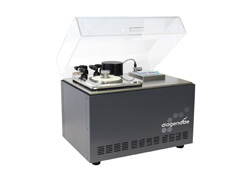 |
Bioruptor Pico: Tissue homogenization and DNA fragmentation
|
2 |
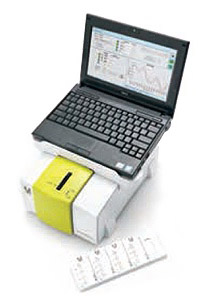 |
Direct Detect: IR based protein and peptide quantitation |
3 |
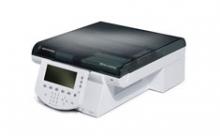 |
Off-gel Electrophoresis: Isoelectric focusing of analytes. 2D gels
|
4 |
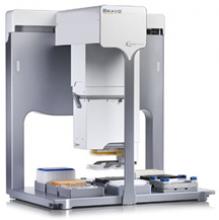 |
Bravo robot: liquid handling robot for sample preparation |
Sample Analysis |
||
5 |
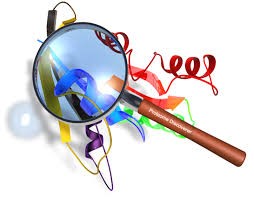 |
Proteome Discoverer Mass spectrum processing program for protein identification and quantitation. |
6 |
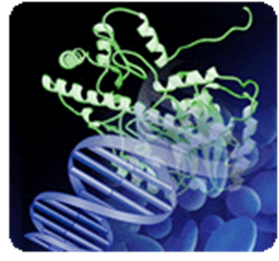 |
Spectrum Mill Mass spectrum processing for protein identification and quantitation. |
7 |
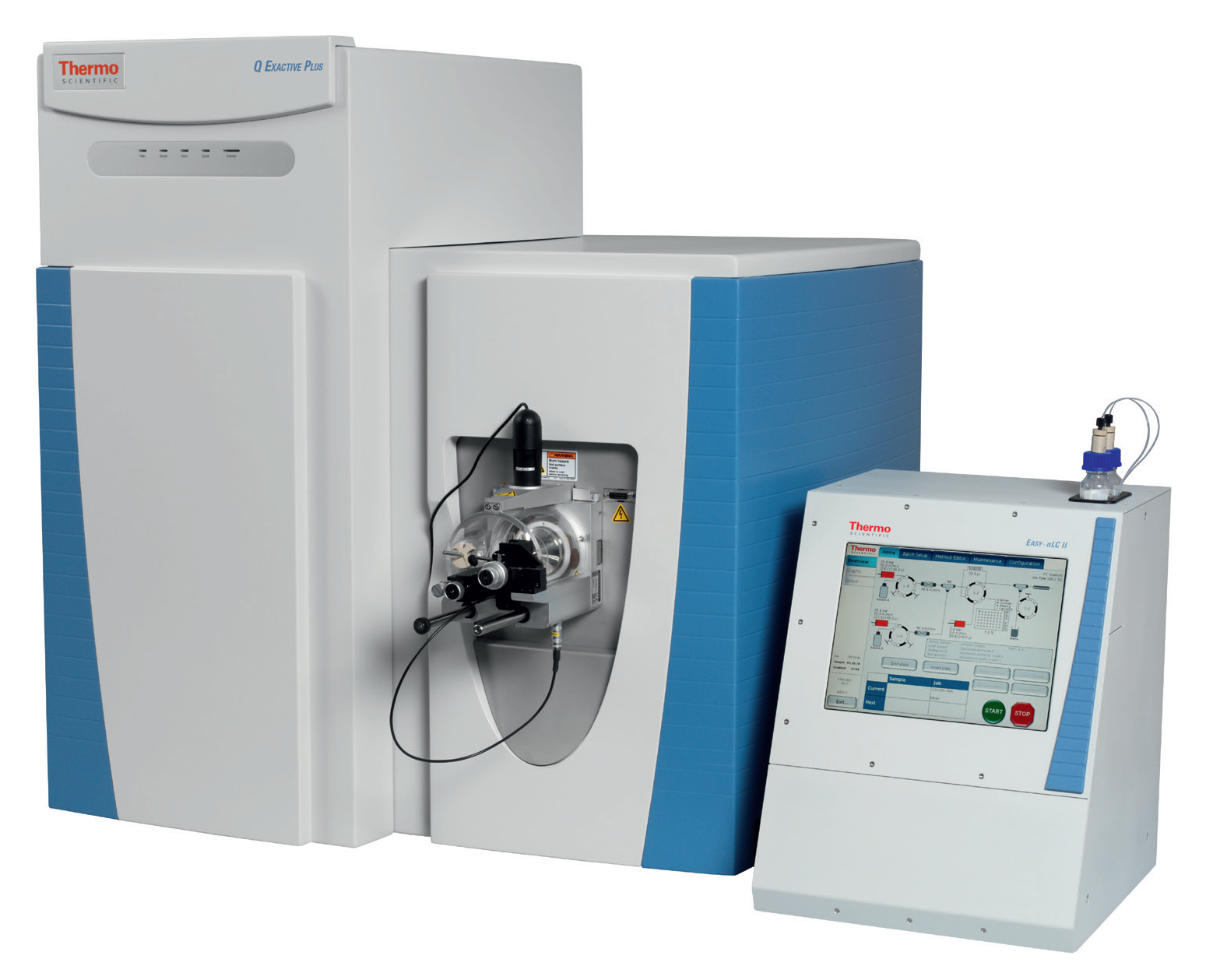 |
Q Exactive High Field with Ultimate 3000 RSLnano HPLC High-resolution accurate-mass Hybrid Quadrupole-Orbitrap Mass Spectrometer. |
8 |
 |
Q Exactive Plus with Ultimate 3000 RSLnano HPLC High-resolution accurate-mass Hybrid Quadrupole-Orbitrap Mass Spectrometer. |







